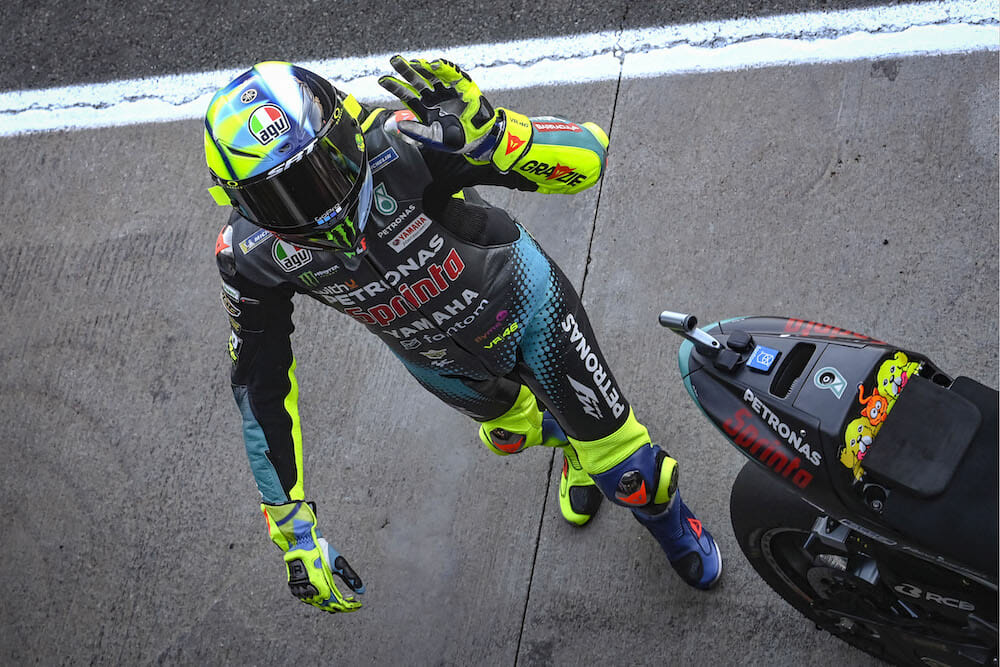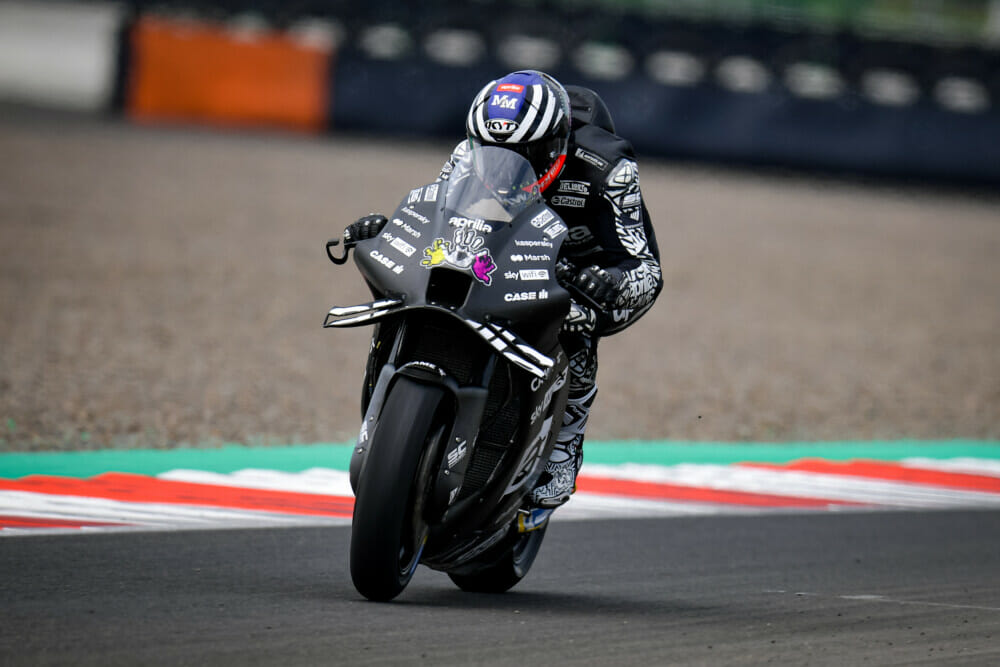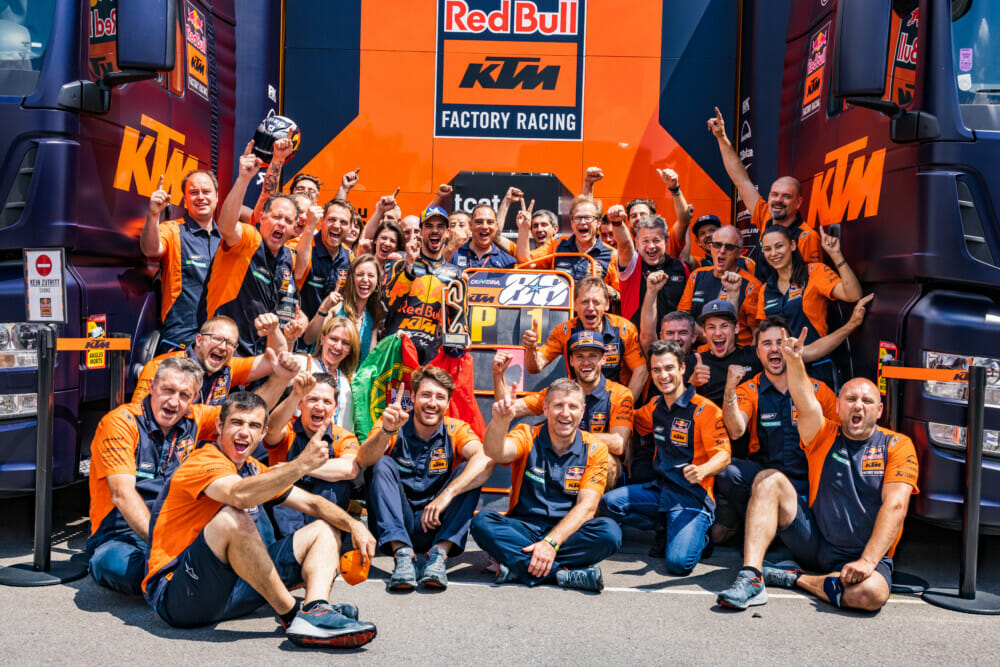Michael Scott | March 2, 2022
Cycle News In The Paddock
COLUMN
European Machinery Fights Back
When Valentino Rossi turned his back on unappreciative Honda to join underdogs Yamaha back at the end of 2003, it was to prove a point—that it was the rider that made the difference, not the bike.
He succeeded, winning the first race of 2004 as well as the championship. Though not without a major technical upgrade by Yamaha that introduced the transformative cross-plane crank engine in a completely revised chassis. And the success rang loud with the fans. It’s the rider that matters. Especially when that rider is as lovable as Valentino.

Back in the factory boardrooms and in the world of hard-core motorcycle technophobes, there’s another way of looking at it. The rider is important, obviously. Racing wouldn’t be much fun without them. But they are only part of the deal.
That’s why there is the constructors’ championship. And why it’s worth noting how the past decades, since the advent of MotoGP four-strokes, the landscape has changed.
In the dim and distant past, this title went first to AJS then twice to Norton but became an Italian playground for Gilera and then MV Agusta, right up until 1973, with a single interlude for Honda in 1966.
Between 1974 and 2020, with just one exception, the title was in a Japanese stranglehold. Yamaha had it for two years, Suzuki for seven, and then latterly Yamaha and Honda had control.
That single aberration came in 2007, first year of 800cc MotoGP bikes, when Casey Stoner’s inspired riding, and Ducati’s clever electronic tactics in saving newly restricted fuel, stole it for once. Then it was back to Honda and/or Yamaha. Until 2021, when Ducati won it once more, fair and square. Europe fights back!
This win was more significant than in 2007, thanks also to other factors—the arrival of two more European factories, increasingly at the sharp end of a contest that has become closer than ever in racing history.
There is the growing strength of KTM, a few hiccups last year notwithstanding. The other factor emerged only in February this year, in pre-season testing—a quite unexpected pre-eminence of Aprilia.
 Aleix Espargaro put the revamped Aprilia in third at the test in Indonesian.
Aleix Espargaro put the revamped Aprilia in third at the test in Indonesian.
Well, perhaps not completely unexpected. The Italian poor relation has gone well in tests before. The words “false dawn” have been heard. Something about this time feels different.
To recap, Aleix Espargaro and new teammate Maverick Vinales were top on the first day at Sepang and stayed well in touch on day two and a week later at Mandalika.
The engine is upgraded from last year’s brand-new 90-degree V4, and according to top speed figures isn’t lacking anything. At Sepang they were right up among the Ducatis through the trap, and Vinales third-fastest at 207.1 mph, compared to Zarco’s top Ducati at 208.4.
The rest of the bike, all new, front to back, including the go-to-accessory, a carbon-fiber swingarm. As well as strong power and acceleration, the riders raved about its agility.
Aprilia joined MotoGP in 2015 with the very fast, very raucous but essentially ineffective three-cylinder Cube, then played devil’s advocate by dominating the short-lived production-based CRT class between 2012 and 2014. In 2015 they introduced their RS-GP prototype, ridden by Alvaro Bautista. Now, for the first time since then, the Italian marque looks like a serious contender.
The threat is boosted by the addition to the team of Vinales, looking to reboot his career after the slow and embarrassing decline at Yamaha. Maverick is aiming to become the first rider in the new four-stroke era to win on three different makes. (Back in the 500 days, only Hailwood, Lawson and Mamola did it, and Capirossi on a 2T/4T overlap).
KTM had more mixed test results, casting around at Sepang, then with only Brad Binder shining at Mandalika, and somewhat eclipsed by the end, dropped to ninth, although only half-a-second adrift. But he is a formidable racer, teammate Oliveira a proven race winner, and KTM a highly focused factory team with a proven ability to find real progress.
 Miguel Oliveira and KTM crew at Circuit de Barcelona-Catalunya
Miguel Oliveira and KTM crew at Circuit de Barcelona-Catalunya
Thus, there are three European manufacturers lined up against three Japanese. And thanks to the dumbing down of tech regs leveling the competition, they have a greater chance than ever of retaining the title that the engineering departments really care about.
Against them, a revived Honda has the best chance of regaining honors for Japan. With 25 past titles (against 16 for MV Agusta, 14 for Yamaha and seven for Suzuki), and after two poor seasons, they are poised to fight back.
But Ducati has the best chance of upholding Europe’s growing threat, simply by strength of numbers. Eight Desmosedici’s dwarf all other marques, with Aprilia (and Suzuki) only having two, the others a maximum of four.
So as much as the bike, as much as the riders, it’s the numbers that make the difference. CN
Click here for all the latest MotoGP news.